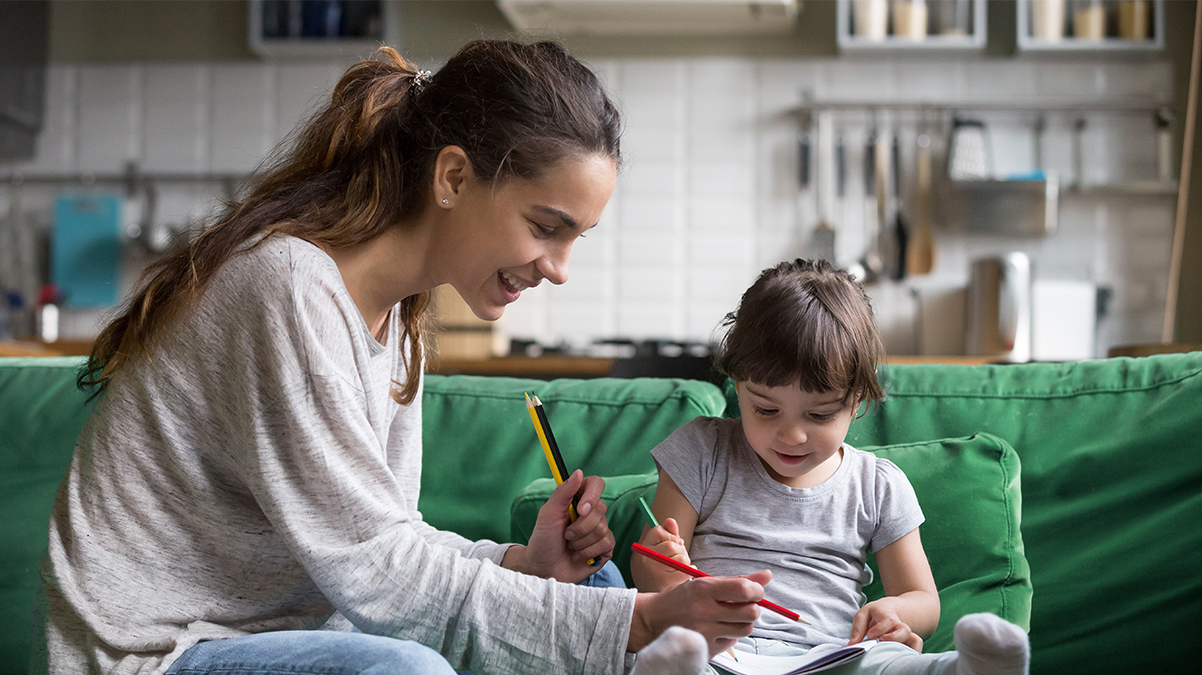Prepping an Occasional Babysitter to Watch Your Child With T1D

Imagine that you have an urgent appointment that you can’t reschedule when your usual babysitter calls to let you know they can’t make it tonight—luckily, she knows someone who can fill in! It’s a last-minute switch, and you’d prefer to use someone who is already familiar with type 1 diabetes (T1D), but you don’t have another option.
Now the question is, how will you bring the new sitter up to speed on your child’s disease? In this guide, we’ll outline the basics of type 1 diabetes, so that new caregivers are prepared to help your child manage their type 1 diabetes and know how to spot the signs of hypoglycemia (low blood sugar), how to treat it and what to do in case of an emergency. For more comprehensive guidance, see the Omnipod Sitters Guide.
Explaining Type 1 Diabetes
Make sure the sitter knows that having type 1 diabetes doesn’t bar your child from taking part in the sports and activities that other kids enjoy or mean that they can never have foods like candy or dessert. While this is a serious disease that must be carefully managed, looking after your child will be much like looking after a kid without type 1 diabetes, with the exception of a few routine management activities and preparedness information. Reassure your new sitter that if they have any questions throughout the night, you will be a phone call or text message away. Many parents follow their kids’ continuous glucose monitors (CGMs), allowing them to track of their children’s blood sugar remotely and stay connected should an emergency arise.
Explaining Glucose Monitoring to a Babysitter
Because people with type 1 diabetes can’t produce insulin on their own, they must carefully monitor changes in their blood sugar using a continuous glucose monitor (CGM) or glucometer/glucose meter. At a minimum, kids with type 1 should check their blood sugar four times a day. Good times to check include:
- In the morning
- Before a meal
- After exercise
- Before bedtime
- If the child is experiencing symptoms of high or low blood sugar
Walk your sitter through how your child checks his or her blood sugar and write down what the “normal” range is for you child. You may want to demonstrate the process for the sitter, so they know how it’s done and can interpret the numbers, and so that they can ask questions before you leave. Depending on how old your child is, they may be able to check their blood sugar on their own. Regardless, you’ll want the babysitter to be confident and comfortable that they can check your child’s blood sugar in case your child can’t. You may also want to ask the sitter to share with you the blood sugar readings taken while you are out, so you can provide guidance to them if they’re not sure. Remember to be available for your sitter to contact you, by keeping your phone on and offering them a backup number or individual to reach out to in case your number is not reachable.
What to do if your child’s blood sugar is low
Go over the key signs of low blood sugar, especially hypoglycemia (low blood sugar), which can be life-threatening if left untreated. Tell the babysitter about symptoms that may indicate your child needs to raise their blood sugar, including:
- Shakiness
- Dizziness
- Sweating
- Hunger
- Headache
- Irritability
- Pale skin
- Sudden moodiness or behavior changes, such as crying for no reason or throwing a tantrum
- Clumsy or jerky movements
- Trouble paying attention
- Confusion
- Tingling feelings around the mouth
- Seizure
- Nightmares and confusion on awakening
When your child has low blood sugar, and the let the sitter know to give them glucose tabs, juice or a fat-free carbohydrate-filled candy like gummies or jellybeans. Put these items in an easy-to-access location and let the sitter know in advance where they can find them. Ask the sitter to contact you immediately if your child is experiencing signs of hypoglycemia, so you can guide them on next steps.
If there is an emergency, direct the sitter to stay with the child and call 911. Teach the sitter about glucagon —which they can administer if the child is experiencing dangerously low blood-sugar — and demonstrate how to administer it if required.
What to do if your child’s blood sugar is high
High blood sugar (hyperglycemia), is typically less serious in the short-term, but still can be treated with a dose of short-acting insulin. Symptoms of high blood sugar include increased thirst, frequent urination, lethargy, and sometimes moodiness—though it’s always best to get a reading to confirm. If blood sugar levels are high, let the babysitter know that your child will need a dose of short-acting (bolus) insulin to bring the blood sugar levels down.
Explaining Insulin Injections to a Babysitter
While your child will be receiving a dose of long-acting (basal) insulin via injection or by wearing a pump, short-acting (bolus) insulin is needed before meals and snacks, and in other cases where blood sugar rises above the target range. When the babysitter arrives, communicate that there are a number of reasons why your child may need insulin, including stress, changes in physical activity or taking too little insulin for the amount of carbs consumed.
In addition to offering these explanations in person, it may be useful to write down caregiver tips and step-by-steps to leave for the babysitter. And, as mentioned above, let your sitter know that they have an open line with you if they have any questions or concerns—your child’s safety is the top priority for both of you!